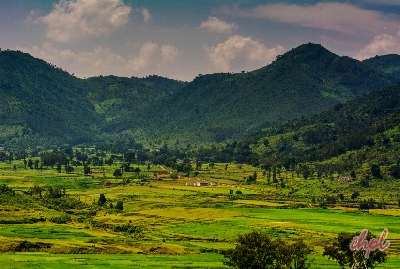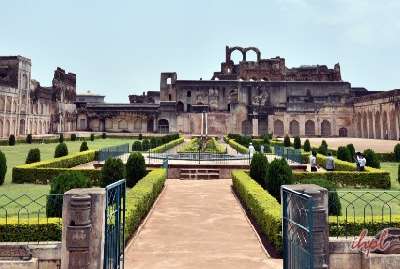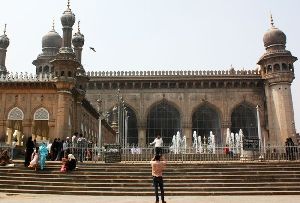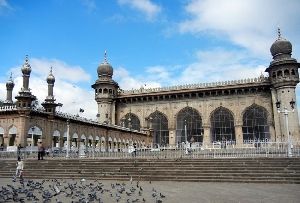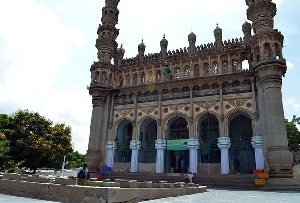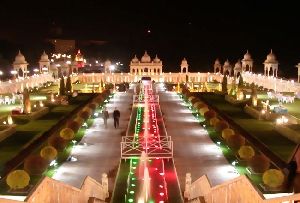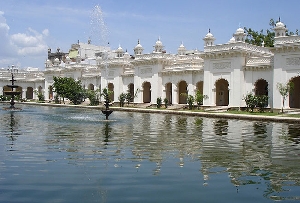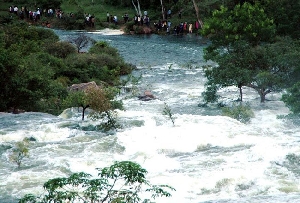One of the newest states of India, Telangana, has been carved out of Andhra Pradesh – a state in the South. The state is celebrated for its vibrant culture, and dances form an integral part. With the origin of Telangana from Andhra Pradesh, the dance form also has a new address. Yet, dance, music, and art still hold the age-old quintessence with a cultural history that dates back thousands of centuries. So, here are some of the most popular folk dances of Telangana.
Perini Sivatandavam
Also known as Perini Thandavam, Perini Sivatandavam is a medieval dance form. It came to light in the 12th century during the Kakatiya dynasty. The dance form is associated with Lord Shiva. This is the dance of warriors, performed by men who dance to bells, conches, and drums. It is believed that the dance-infused Prerna (inspiration) among the soldiers as they performed tandava in front of Lord Shiva’s idol before going to the battlefield. Thus, the name – Perini Sivatandavam. It involves five elements – fire, water, air, earth, and wind, and celebrates ‘Om’.
The Ramappa Temple in Warangal holds evidence of this dance form. At the temple, sculptures of the Perini Shiva Thandavam dance are still there. The thousand pillared temples and shrines at Palampet and Ghanpur in Warangal also reflect Perini Thandavam. As the Kakatiya Dynasty dwindled, the dance form was pushed to darkness. But the dance form was revived by the late Dr. Nataraja Ramakrishna (1923-2011).
Dappu Dance
Dappu Nrityam or Dappu Dance is a dance form of Telangana. Different names are known as Dappu in various parts of the state, such as Tapetta and Palaka. This dance form is believed to have originated in the Nizamabad district of Telangana. Dappu dance form derives its name from the harmoniously cadenced musical instrument ‘Dappu,’ which is drum-shaped like a tambourine. Various names like Tapetta and Palaka know it. In Telugu rural art (called Janapada Kalalu), Dappu has an important role.
The dance performers wear colorful and bright attires that include a Talapaga (a turban) with a dhoti, datti, and ankle bells. Usually, men perform this dance on many festive occasions in a group of fifteen to twenty. However, women can join in if performed as a celebratory dance. Dancing styles have slight variations for different occasions. For instance – while dancing on the road, dancers move forward and on stage when performed in a circular motion. This dance form proves that you don’t need expensive instruments or flashy performances.
Lambadi
Lambadi is an ancient folk dance of Telangana (and Andhra Pradesh). It originated in the tribes of Rajasthan, which were semi-nomadic. These are known as Lambadis, Banjaras, or Sengalis. The dance showcases tribal culture, highlighting their social ties, lifestyle, and religion. The daily lives of farmers are reflected through this dance form and are performed to seek God’s blessings for a good harvest. Performed by women, Lambadi dance has rare participation of men.
The dance is performed around the fire at night. Hand movements during the dance show activities involved in farming that include harvesting and sowing. Songs are sung in various languages, such as Rajasthani, Gujarati, Marathi, and Telugu. Dancers clad themselves in flashy dresses with glittering work on them. Glitzy jewelry adds to the sight of the performance. The dance is also performed at several festivals, such as Diwali and Holi.
Oggu Katha
Oggu Katha, which means Oggu tales, is believed to be an ancient folk theater art form of Telangana. It derives its name from Oggu – a small hand drum associated with Lord Shiva. This traditional dance form of Telangana is more about narrating Hindu mythological stories while singing and praising Hindu gods. Societal issues are also taken up as dance themes. The performers tell Mallanna, Renuka Yellamma, Beerappa, and other local deities. Pastoral communities like Kuruma and Golla (Yadavas) perform this art form.
Today, over 100 Oggu Katha groups exist, comprising 4-6 performers. This dance’s training and performance involves ten singing style varieties, makeup, dresses, dance movements, and unique use of musical orchestration. Other key elements of this art form include imagination and improvisation. With changing times, the tradition is going through several changes to be passed on to the generations more easily.
Chindu Bhagavatam
Another folk dance of Telangana, Chindu Bhagavatam is all about telling epic tales through dance. The word ‘chindu’ means to jump, and the performance is peppered with leaps and jumps. It gained the name of Chindu Yakshaganam, the other name for Chindu Bhagavatam. The term ‘Bhagavatam’ is associated with it as most of the stories narrated are from ‘Bhagavatam’ – the Bhagavata Purana (translated as ‘the history of the Vaishnavas).
As the performers dance and tell the story, the word has been associated with it. Dance, music, dialogue, costume, makeup, and stage techniques are combined with this dance form. The dance form dates back to the second century B.C. and has started by enacting brave acts such as war, hunting, and others. Every act needed a body language of its own, and this dance form emphasizes the same. It is similar to Yakshaganam – a traditional theater form of Karnataka.
Gussadi Dance
Gussadi is a folk dance in Telangana performed by Raj Gonds of the Gondulu tribes in the Adilabad district. The Padma Shri honor 2021 was also bestowed upon the Gussadi dance exponent – Kanaka Raju. Gonds Deepavali is the biggest festival for the Raj Gonds when the Gussadi dance is performed. The dance begins on the full moon day and continues till the last day of the fortnight of Deepavali.
Every performer of the dance dons a turban with peacock feathers in it and deer horns. They also sport artificial beards and mustaches, and goatskin on their body. All decked up in ostentatious ornaments. Additionally, the dancers move in the villages as troupes. These singing and dancing troupes are known as Dandari dance troupes. This dance form is a part of Dandari and has two to five members in each troupe.
Tholu Bommalata
Tholu Bommalata is a prevalent shadow theater tradition. As Tholu means leather and Bommalata means puppet dance, the term stands for “the dance of leather puppets.” Among other traditions, this dance form follows leather puppets, which are its most important part, known for their colossal size. The dance concept is based on epics, primarily on Ramayana and Mahabharata. However, some performances are also based on a few Vaishnava texts.
Its folk expression is a lovely amalgamation of various art forms that include music, dance, acting, painting, narrative storytelling, and engraving. Skits with live music comprise the performance. The dance form is shadow-based because the puppets perform behind a white curtain. The audience thus watches the colorful shadow dance of the puppets and not the actual puppets. A source of light creates this magic and magical performance behind the curtain.
These Telangana folk dances reflect the state’s legends, beliefs, and everyday life activities and take a sneak peek into the same. With different backgrounds and significance, every dance has an unparalleled and commendable essence. So take time to partake in this cultural charm of Telangana with a visit there. Book Telangana tour packages with Indian Holiday and get it customized according to your budget and interests.
Check out Hyderabad Tour Packages, Warangal Tour Packages



